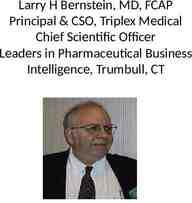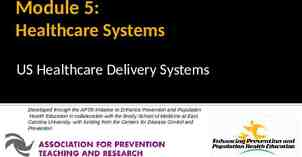Confined Space Training 29 CFR 1910.146
25 Slides3.55 MB
Confined Space Training 29 CFR 1910.146
Confined Space Defined Is large enough and so configured that an employee can bodily enter and perform assigned work; AND Has limited or restricted means for entry and exit; AND Is not designated for continuous employee occupancy.
Permit Required Confined Space (PRCS) Confined space that has one or more of the following characteristics: 1. Contains or has the potential to contain a hazardous atmosphere; 2. Contains a material that has the potential for engulfing an entrant; 3. Has an internal configuration such that an entrant could be trapped or asphyxiated by inwardly converging walls or by sloped/tapered floors; Or 4. Contains any other serious “recognized” hazard
Hazardous Atmosphere An atmosphere that may expose employees to the risk of death, incapacitation, impairment of ability for selfrescue (unaided), injury or acute illness from one or more of the following causes: 1. Flammable gas, vapor or mist in excess of 10% of its LFL; 2. Airborne combustible dust at a concentration that meets or exceeds its LFL; 3. Atmospheric oxygen concentration below 19.5% or above 23.5%; 4. Atmospheric concentration of any substance in Sub Parts H or Z which exceeds the PELs. 5. Any other atmospheric condition that is immediately dangerous to life or health
Non-Permit Confined Space A confined space that does not contain or, with respect to atmospheric hazards, have the potential to contain any hazard capable of causing death or serious physical harm.
Confined Space Entry . Entry: The action by which a person passes through an opening into a permit-required confined space; Entry includes ensuing work activities in that space and is considered to have occurred as soon as any part of the entrant’s body breaks the plane of an opening into the space.
Confined Space Personnel Authorized Entrant – Enters the confined space Authorized Attendant – Stands watch outside the entry point of the space Entry Supervisor – Oversees entry, ensures conformity to permit & acceptable conditions for entry
Confined Space Program Written program. Responsibility, Accountability & Duties: Outline for each major position; provide training CS Inventory: List both Permit Required Confined Spaces (PRCS) and Confined Spaces (CS); list hazards for each; Note any changes in use or procedures that would re-classify space Unauthorized Entry Prevention: All employees aware of CS locations; use signs, training and/or LOTO. Prohibit entry!!! Permit System: Spells out the permit content; must describe methods to be used to issue, post, cancel and audit permits, and to return spaces back to service.
Confined Space Program Attendants: Provide at least one attendant outside the PRCS for the duration of each entry. - Specify duties & general qualifications - Multiple spaces? Entry Preparation: Outline the equipment and methods to be used to identify and evaluate hazards. Confirm that conditions are safe to enter and will remain so for the duration of the entry. ** Entry Permit verifies these steps for the proposed entry
Confined Space Program Permit Space Reclassification: Can reclassify to a Non-Permit CS if conditions met: - all actual/potential hazards ELIMINATED - entries to evaluate or eliminate hazards require full PermitRequired CS program - certify basis of reclassification, space, date, signature - if hazards arise, exit space Non-Permit Space Procedures: With introduction of hazards, NPCSs can quickly become PRCSs. Identify spaces and prohibit entry except by authorization.
Confined Space Program Evacuation & Rescue: - Procedures clearly spelled-out - Rescue teams made available - Means of contact provided - Appropriate equipment available; retrieval systems for non-entry rescue; vertical 5 ft - In-house rescue teams are OPTIONAL! - Dial 911 & notify of confined space emergency, you may attempt retrieval at that point
Confined Space Program Medical Surveillance: medical suitability should be determined for entrants, attendants, entry supervisors and rescue teams. Other standards may apply. Program Revision & Auditing: - unauthorized entry; injury or near-miss - prohibited conditions; space changes - employee complaints
Confined Space Program Training: certified in writing - for each affected employee - before first assignment & with changes - deviations from space entry procedures - shall establish employee proficiency Contractors: Host employer must: - inform about PRCS - apprise of precautions/procedures - coordinate entry operations if both companies’ employees involved - debrief contractor - construction contractors working in general industry locations
Confined Space Permit System Space & purpose of entry Date & entry duration Authorized entrants Attendants Entry Supervisor Hazards of the PRCS Acceptable entry conditions CONFINED SPACE PERMIT Results of initial & periodic tests Rescue & emergency services Communication procedures Equipment to be used Any other safety info Other permits
Atmospheric Testing Evaluation Testing: CS analyzed using equipment of sufficient sensitivity and specificity to identify any hazardous atmosphere that may exist or arise. - develop permit entry procedures by results - conducted/reviewed by technically qualified professional TOP MIDDLE BOTTOM
Atmospheric Testing Verification Testing: “Periodic” testing for residues of all contaminants identified by evaluation testing. - permit specified equipment - ensure concentrations within acceptable ranges of permit entry conditions - record results on permit - testing stratified atmospheres - order of testing (Oxygen, LEL, CO, H2S)
Typical Hazardous Contaminants CH4 (METHANE) LIGHTER THAN AIR CO (CARBON MONOXIDE) SAME AS AIR H2S (HYDROGEN SULFIDE) HEAVIER 1 AIR 1 1
Sampling Strategy Sample Bottom, Center and Top of Space
Multi-Gas Instruments OXYGEN - MIN 19.5% , MAX 23.5% CO - ALARM 35PPM COMBUSTIBLE - ALARM 10% LEL H2S - ALARM 10 PPM
Oxygen (O2) 20.9% NORMAL 15% - 19% DECREASED ABILITY AT STRENUOUS WORK AND BREATHING DIFFICULTIES, PEOPLE W/ CORONARY, PULMONARY, OR CIRCULATION DIFFICULTIES. 10% - 12% RESPIRATION RATE INCREASES, LOSS OF JUDGEMENT, LIPS TURN BLUE 8% - 10% MENTAL FAILURE, ASHEN COMPLEXION, NAUSEA. 6% - 8% FATAL AT 8 MINUTES , 50% FATAL AT 6 MINUTES, TREATMENT REQUIRED FOR RECOVERY AT 4 TO 5 MINUTES 4% - 6% COMA WITHIN 40 SECONDS, CONVULSIONS, CEASED RESPIRATION, FOLLOWED BY DEATH
Carbon Monoxide (CO) 35 PPM ALARM LEVEL - PERMISSIBLE OVER 8 HOURS 200 PPM SLIGHT HEADACHE AFTER 3 HOURS 600 PPM SEVERE HEADACHE, DISCOMFORT @ 1 HOUR 2000 PPM CONFUSION, HEADACHE, NAUSEA @ 2 HRS 2500 PPM ALL OF THE ABOVE WITH PALPITATION OF THE HEART AND UNCONCIENCENESS @ 30 MINUTES 4000 PPM DEATH UNDER 1 HOUR !!
Hydrogen Sulfide (H2S) 10 PPM ALARM LEVEL, PERMISSIBLE EXPOSURE LIMIT 15 PPM SHORT TERM EXPOSURE LIMIT @ 15 MINUTES 50-100 PPM MILD EYE IRRITATION, LOSS OF SENSE OF SMELL, MILD RESPIRATORY IRRITATION @ 1 HOUR 200 - 300 PPM PRONOUNCED EYE IRRITATION, MARKED RESPIRATORY IRRITATION. 500 - 700 PPM UNCONCIOUSNESS LEADING TO DEATH WITHIN 1 HOUR 1000 PPM DEATH WITHIN MINUTES !!
Lower Explosive Limit (LEL)






























